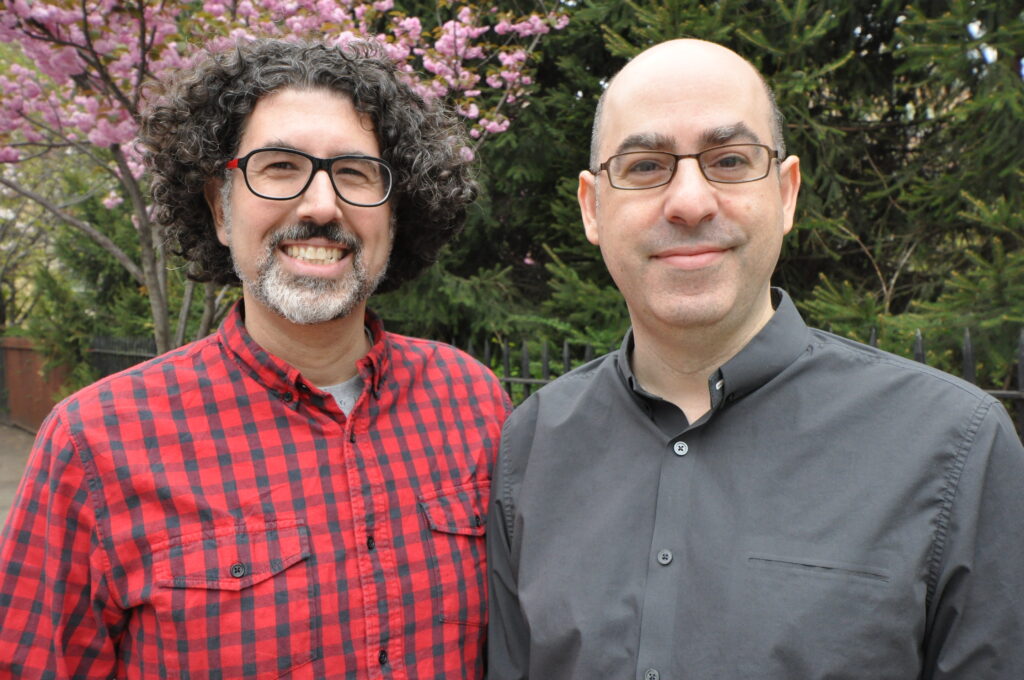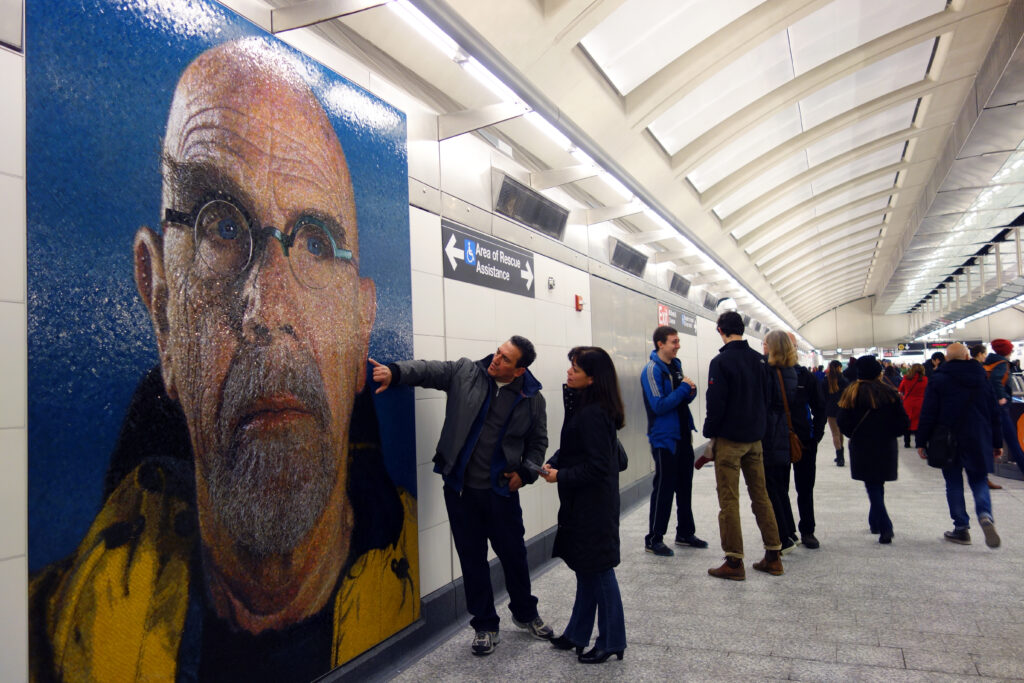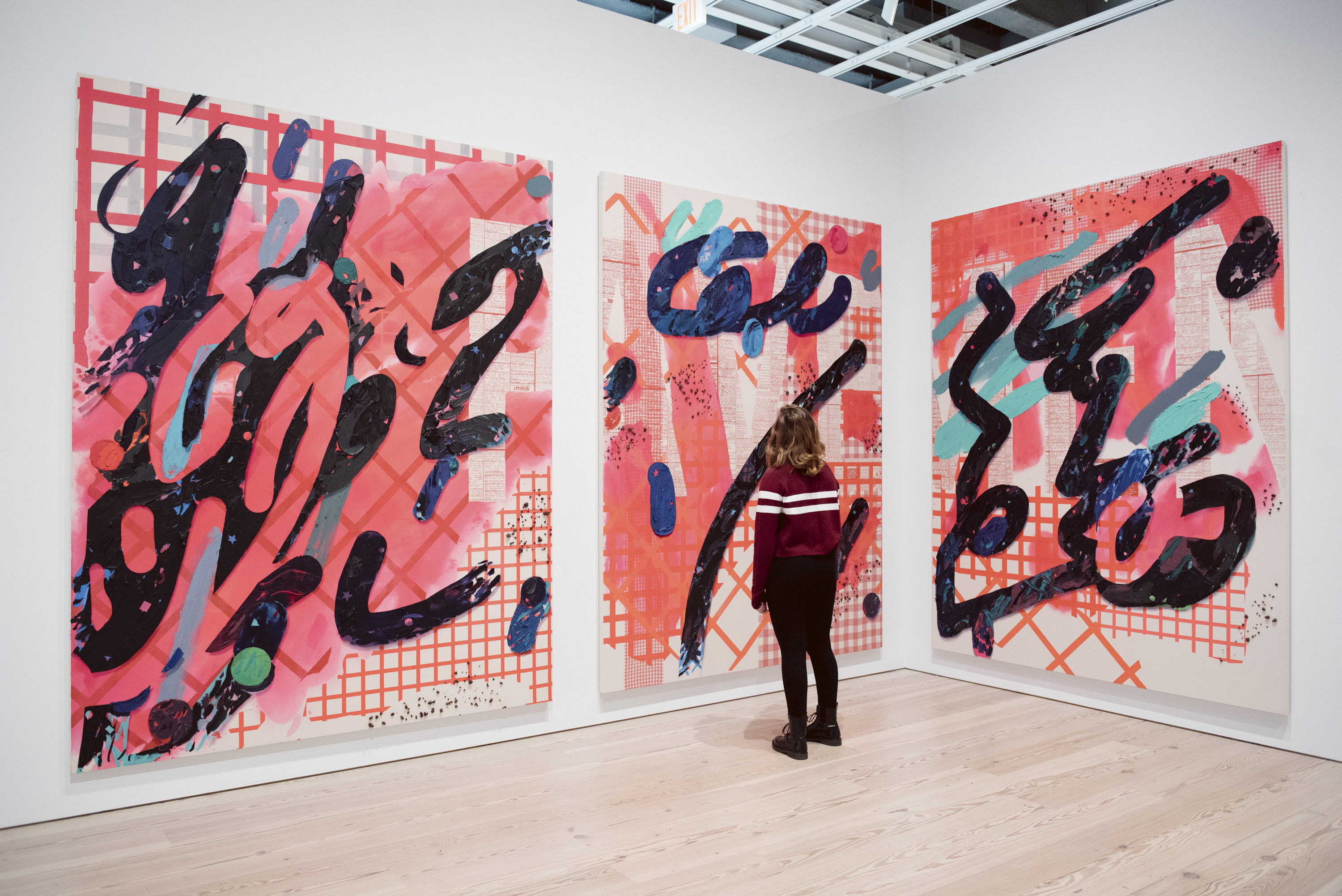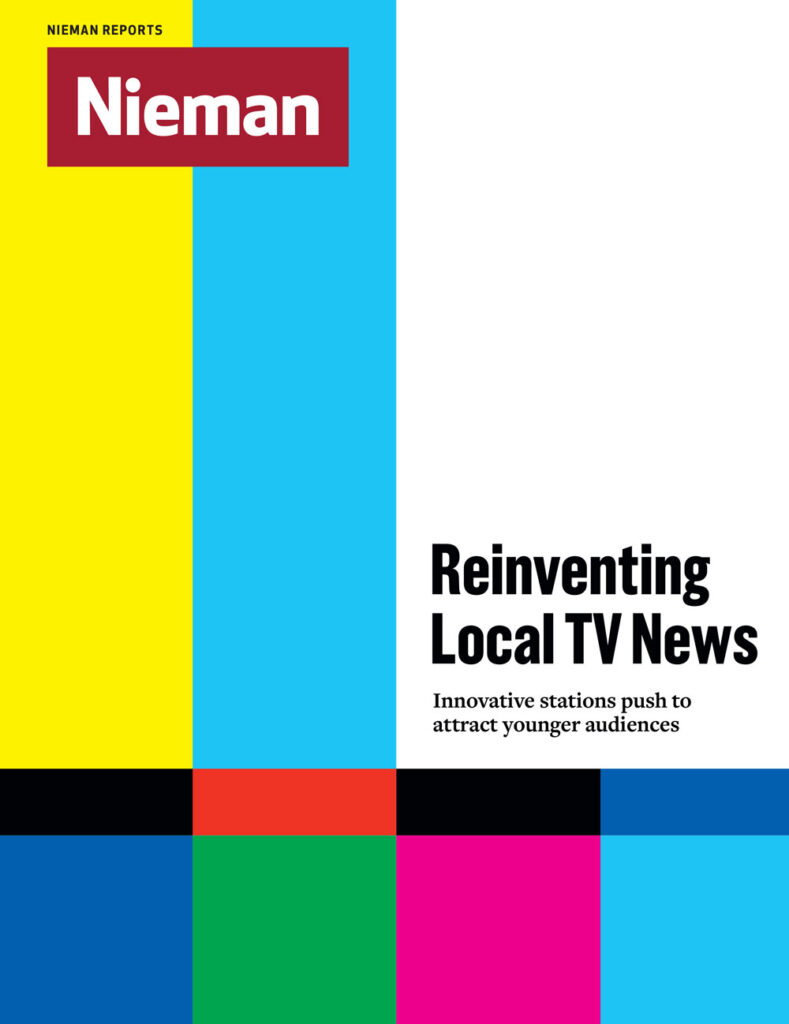Veken Gueyikian had a problem. It was 2009, and he was in love with an unhappy arts writer.
His husband, art critic Hrag Vartanian, had grown weary of low-paying writing gigs and the constraints of the 800-word reviews he wrote for art market-focused magazines. Gueyikian, a digital marketing strategist, and Vartanian talked about starting an online arts magazine, but friends and acquaintances in art world circles warned against it. No one was making real money in online arts publishing, they were repeatedly told. “I mean, literally every single person we talked to said you could not make a business with online art publishing,” says Vartanian.
Related Reading
Critics and Online Outlets Leading the Vanguard in Arts Writing
From heady journals to Tumblr manifestos, innovation in art criticism is happening outside the mainstream
by Mary Louise Schumacher
At that time, ad revenue and arts writing jobs were in freefall at legacy publications and the economic climate was challenging and uncertain. There was a crowded field of upstart art blogs, but they were mostly labors of love that made little, if any, money. And the established art press, glossies like ARTnews and Artforum, didn’t seem especially interested in investing in their online operations, Gueyikian says.
Nine years later, many of those independent visual arts blogs are still struggling or long gone, much of the art press is catching up online, and Hyperallergic, the for-profit “blogazine” Gueyikian and Vartanian launched, has risen to rival the arts journalism of legacy media. “I think that they managed, kind of against the odds, to reinvigorate art criticism,” says Sarah Douglas, editor in chief of ARTnews. “There’s been this mantra since however long that art criticism is dying, and I think they managed in their own way to breathe new life into it.”
Indeed, Hyperallergic was the only digital newcomer that topped a list of publications in the U.S. well regarded for the quality of their criticism, according to a survey I conducted while the 2017 Arts & Culture Fellow with the Nieman Foundation for Journalism at Harvard. The top of that list included titles such as The New Yorker and the Los Angeles Times and mainstay art publications such as Artforum and Art in America. Hyperallergic was also named the top digital resource for arts journalists, according to the survey of more than 300 visual arts writers and critics working regularly for U.S. publications. Some of the more than 100 questions about the priorities and pressures of the field replicate those of a survey done 15 years prior by the National Arts Journalism Program at Columbia University. This provides a basis for comparison over a period of dramatic change to both media and culture. About a third of respondents hold staff positions, while the rest are primarily freelance writers working for a mix of legacy publications and digital platforms from more than 35 states and several countries. The broader results of the survey will be published later this year.
Hyperallergic has risen to rival the arts journalism of legacy media
Hyperallergic describes itself as “a forum for playful, serious, and radical perspectives on art and culture in the world today.” It is known for strong—and sometimes controversial—opinions and a diverse range of content, including traditional reviews, news, personal essays, podcasts, interviews, gossip, poetry, history, and comics. “I think it’s the breadth of what they cover, and sometimes they cover topics that you don’t find elsewhere,” says Christine Ledbetter, the arts editor for The Washington Post, adding that she reads Hyperallergic and appreciates the competition. “It’s the things that maybe I’m not looking for … It’s the surprises. I guess that’s what I like about it. ”
Today, Hyperallergic employs a staff of nine, most of whom work out of one room in a light-filled former factory in Brooklyn. Editor-writers work side-by-side at long tables surrounded by art books. Titles for dozens of in-the-works articles fill whiteboards on the walls. Hyperallergic also works with about 100 freelancers, an increasing number of whom are on contract to write regularly from different regions across the country, says Vartanian, editor in chief. More than 600 writers have contributed work since the site’s founding.
More than a million people read Hyperallergic each month, says Gueyikian, who is publisher. The site’s revenue last year was $1.5 million, an increase from about $1.1 million in 2016, he says. The couple have invested personal savings into the business and have yet to pay themselves full salaries. Their first profitable year was 2014, and they have been primarily funded by ads since, breaking about even each year, Gueyikian says “Essentially, they are one of the few, if not the only, commercially viable, native-to-online publishing institutions to emerge in the last decade,” says Sky Goodden, editor and publisher of Momus, an online publication that emphasizes art criticism.
About 98 percent of Hyperallergic’s revenue comes from the ad network Gueyikian created to support the site—and ultimately the partner he cared so much about, he says. It’s called Nectar Ads.
Gueyikian gave up his job in corporate advertising with LBi Health to run the ad network. Before he launched it, Hyperallergic was a digital newborn, effectively a personal blog for Vartanian. The men paid a couple thousand dollars to get the WordPress site up. Gueyikian had a hunch that creating ads for visually sophisticated clients was an opportunity to avoid the “race to the bottom” of digital advertising, by which he means garish and interruptive ads.

The idea was to create beautiful ads that readers would recognize as part of an art-literate community, Gueyikian says, adding that he regards accepting ads for the site as an endorsement of sorts. Many of the arts organizations Gueyikian approached—museums, nonprofits, art schools, art services—had never paid for digital ads before, and he spent a lot of time in the early years educating them on terms such as “impressions,” he says. Ads for luxury products and fashion brands that sought to target the wealthiest part of the art world are rejected, he adds, unless the brands are promoting an art-focused project.
“If you look around media in the art world, the advertising is often welcome,” says Gueyikian. “It’s often part of the experience … So I tried to use that to our advantage and work with sponsors that our community wants to hear from, whether it was for an exhibition at the Met or an MFA program.”
To offer advertisers scale, Gueyikian created a network of like-minded art sites where the ads could also appear. Nectar Ads started with just three sites and has grown to a group of 11. That network reaches about 4 million readers a month and includes sites such as Rhizome, Colossal, the College Art Association, Art F City, Aint-Bad, and Spoon & Tamago. More than a quarter of Nectar’s ad revenue goes back to the network’s sites, Gueyikian said.
Nectar Ads has worked with more than 500 sponsors since it launched, creating ad campaigns with fixed budgets and fixed schedules. These include web-based ads, mobile ads, newsletters, and native ad campaigns. Sponsored posts, which often anchor wider ad campaigns, are increasingly important to the bottom line and represent about 20 percent of ad revenue, Gueyikian says. To distinguish these posts from regular content, Hyperallergic uses a “Sponsored” label, a different layout, and the sponsor’s logo in place of a byline.
Advertisers have included museums such as the Metropolitan Museum of Art in New York, the Museum of Modern Art in New York, the Hammer Museum in Los Angeles, the Walker Art Center in Minneapolis, and the Museum of Contemporary Art Chicago; art schools such as the Rhode Island School of Design, and the School of the Art Institute of Chicago; publishers such as Yale University Press and MIT Press; auction houses such as Sotheby’s and Christie’s; and brands like Adobe, Epson, Perrier, Pernod, Audi, and AT&T.
As for audience, Hyperallergic is aiming to be accessible and relevant to readers who are curious about art but who are not just art world insiders, Vartanian says. Among other things, that means covering issues of the day and social movements through the lens of contemporary art and artists. It also means combining political activism with criticism and reporting.
“I think [Hyperallergic] managed, kind of against the odds, to reinvigorate art criticism”
—Sarah Douglas, ARTnews editor in chief
Hyperallergic attracted attention early on through its coverage of the Egyptian revolution in 2011, particularly developments at the Egyptian Museum, where antiquities were endangered, and also the role of artists and graffiti in the uprising. The site’s coverage began with the aggregation of reports from across the web and eventually included reporting from the ground.
The site also covered cultural trends surfacing from the web when mainstream media was slow to do so, says Charlotte Frost, author of the forthcoming book “Art Criticism Online: A History” (Gylphi, 2018). Today part of our visual culture is the internet itself, from emojis to memes and beyond. What Hyperallergic has done well is produce criticism of that digital culture, says Frost. She especially noted the writing on selfie culture by Alicia Eler, who has since gone on to become the art critic for the Star Tribune in Minneapolis.
Hyperallergic encourages an “organic approach to story gathering,” Vartanian says. That means “being receptive to uncommon ideas” that fascinate writers rather than covering blockbuster exhibits and art fairs, he says. “I remember once we published a piece about W. E. B. Du Bois’s amazing infographics from the early 20th century and just a few weeks later [artist] Theaster Gates did something with those same images independent of us and our story,” says Vartanian. “I loved that because it showed me that our writer was in sync with what artists and art people were also interested in at the moment.”
Recently, the site has ventured into harder news, thanks to the #MeToo moment. In January, it published a report by Claire Voon and Jillian Steinhauer about art world heavyweight Chuck Close, which included four new accounts of inappropriate sexual behavior backed up by corroborating sources.
Hyperallergic publishes about 4,000 pieces of content a year, and the most popular stories tend to reach between 50,000 and 100,000 readers, says Vartanian. About 35 percent of readers come to Hyperallergic through its daily newsletter, which has a subscriber base of more than 100,000 and features a personal letter from Vartanian on Tuesdays. Vartanian shares what’s on his mind in the letters, which vary in length and tone and reflect the busy life of an editor who is often on the road. An additional 25 percent come to Hyperallergic through social platforms like Facebook, 20 percent come through search engines such as Google, 15 percent come direct to the homepage, and about 5 percent come via links at other sites, says Gueyikian.
Vartanian and Gueyikian acknowledge that articles about famous artists or cheeky content do perform well. Boing Boing recently picked up a Hyperallergic report about a guerrilla yarn bombing of a toilet at the Guggenheim Museum in New York, for instance, the kind of thing that can bring new eyeballs to the site. Still, Vartanian and Gueyikian are routinely surprised by the mix of things readers gravitate to in large numbers. In a recent 30-day period, the most popular articles were about artist Damien Hirst, the bulldozing of a Frank Lloyd Wright building, the relationship between tuberculosis and 19th-century ideals of beauty, a documentary film about the art market, and Edvard Munch’s little-known photography.
Some of the more popular content comes from places outside of the art capitals, too. When Milwaukee-based writer Debra Brehmer wrote an essay about the Wisconsin artist Mary Nohl in 2014, comparing the locally vilified artist to witches burned at the stake, traffic was significant. That piece, about a misunderstood, outsider artist who created a sculptural environment out of her home, brought deep, local expertise to a national audience.

Hyperallergic also has a set of part-time editors who work independently on content posted on the weekends, when the offerings are longer and tend to be more literary and reflective. The weekend editors meet with Vartanian only a few times a year. “It’s sort of taking a way of looking back and reflecting on different exhibitions or shows or books or poetry,” Vartanian says of the weekend content, comparing the approach to The New York Review of Books. “The weekday is much more present tense and engaged.”
Hyperallergic works with a lot of young writers, and while it was acknowledged as an influential publication by survey respondents, Vartanian and Jillian Steinhauer, the recently departed senior editor, were the only regular writers in the mix of individual critics considered influential. In fairness, the top of that list is short and made up of the usual suspects, mostly from legacy publications such as The New York Times and The New Yorker.
Hyperallergic is not without its critics. Momus’ Goodden, for instance, has publicly accused Hyperallergic of not playing enough of a leadership role when it comes to pay rates for arts writers. “I just don’t see any accountability there … and I find it all the more glaring because they have assumed this primary role for audiences online,” says Goodden.
Hyperallergic pays freelance writers a minimum of $100 per contribution, and the rates can go higher for features or deeply researched pieces. Hyperallergic has increased its rates over time and relies less on the work of freelancers than it once did, says Vartanian. Today, about 37 percent of Hyperallergic’s budget pays for its staff and another 14 percent goes to freelance. By comparison, Momus pays a minimum of $300 to its writers and Artnet News pays $400 to $500 for an essay and a minimum of 50 cents a word for shorter news items, according to Goodden and Ben Davis, national art critic for artnet News.
Davis, named one of the nation’s more influential critics by survey respondents, suggests readers may be starting to turn away from publications like Hyperallergic and many others in the larger media landscape that favor, at least in part, quick-fire opinion that courts controversy. “I think there is a level of burnout with that kind of coverage,” Davis says, careful to add that his own publication has been similarly criticized for its velocity and listicles. “You know, that’s a general phenomenon.”
Vartanian agrees that going after a vast audience can be a dead end and says Hyperallergic has shifted focus, especially in the last year, toward deepening loyalty among its core audience. Part of this was a conscious decision to avoid toxic discussions. A few years ago, Hyperallergic’s content on race, gender, and other sensitive subjects saw an uptick in hateful comments, says Vartanian, who is of Armenian descent. “(We) realized that going viral and reaching a broad audience was becoming a complicated issue in the new online climate,” he adds. Sometimes that means taking a pass on would-be internet hits and investing in reporting of intense interest to some. Last December, for instance, Hyperallergic took up what could have been a minor story in a local paper, the downsizing of a fine art library at the University of Texas at Austin, turning out additional articles on the subject, including a piece about how the university changed course. “For us, we were able to make it a bigger story,” says Vartanian. “I bet librarians across the country read that.” Both readers and advertisers seem to want the site to focus on material that people will fully digest, understand and share, he says. “We realized in the last year that our revenue went up when we stopped chasing the numbers,” Vartanian says.
Hyperallergic is aiming to be accessible and relevant to readers who are curious about art but who are not just art world insiders
Hyperallergic is also sometimes taken to task for its activist approach. In one instance, a group of artists and writers criticized Hyperallergic in a Facebook thread last November, suggesting the site was lopsided in its reporting about a protest at the Whitney Museum of American Art, where Los Angeles painter Laura Owens was having an opening. The article in question included a Q&A with the protesters and no response from Owens, who was being accused of “artwashing” the gentrification of the Boyle Heights area of Los Angeles. L.A. writer Carol Cheh says, “There’s a lot going on underneath the surface” of the dynamic at play in Boyle Heights between local residents and artists. “So Hyperallergic publishes that piece … and it just automatically assumes that Laura Owens is the evil enemy, you know, the insensitive, wealthy, one-percent painter. I mean, it kind of automatically buys into that narrative and doesn’t bother to do any investigative journalism.”
In response, Vartanian says the site had covered concerns related to Boyle Heights long before and after the publication of the Q&A and that the site’s reporting must be viewed as a whole. Twenty articles that date as far back as November of 2015 appear on a Hyperallergic page devoted to Boyle Heights-related coverage. The site also published Owens’ response four days later. “The idea that one article would somehow explain an issue isn’t necessarily the way we think of it,” says Vartanian. “It’s part of a bigger conversation. It’s also partly coming from the atomization of the internet … It’s not something we created. It’s something we recognized, that conversations have to continue, that they change and they form.”
Vartanian says Hyperallergic is more than willing to sit out news cycles when caution and more reporting are needed. He pointed to several examples, including a piece about what had been described in The New York Times and elsewhere as a discovery of Arabic characters on a Viking textile, a story that raised questions about the influence of Islam in Scandinavia. Hyperallergic located a writer with expertise in the subject and added a needed perspective to a widely circulated narrative, Vartanian says.
Talking about the future of Hyperallergic, Vartanian uses the word “decentralize” a lot. He wants to break up his own power, he says. They are considering new, independent platforms, sections, or even parallel publications, he says. They are also looking at new forms of sustained coverage, gathering a diversity of voices around particular ideas or topics. It’s that kind of ongoing coverage that increasingly penetrates readers’ consciousness, he adds. “We aren’t interested in the old idea of someone who pontificates and expects everyone to listen and obey,” says Vartanian. “Our greatest challenge is always revenue, more than talent, will, or ambition.”




